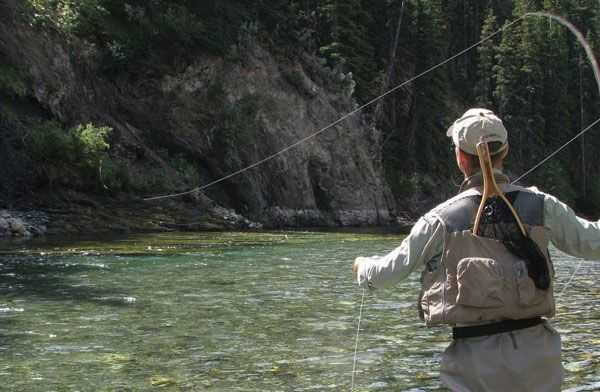How did you learn to fly cast? Did you go out and get a rod and start casting? Most of us, myself included, either had a rod around the house or bought one and then gave it a shot. If you want to become a better fly caster there are a few things you will want to do. The first is decide it is your goal to become a better caster. You can be a good fisherman and not cast great loops, but you can be a better fly fisherman if you can cast with more accuracy and distance, and it’s all about the loops. The following is the start of a series that will help you achieve good loops for that beautiful and effective cast.
“The Essentials of Fly Casting” by Bill Gammel is one of many fly casting books on the Federation of Fly Fisher’s reading list. He breaks down the cast into five essentials. I had to make an easy method of remembering them, so I’ve given it the acronym of SSSPP; you can make it the sound of your cast. The goal of the essentials is to get the rod tip to go on a straight-line path, thus creating a tight, efficient loop to carry the fly out.
The straight-line path of the rod tip (SLP) is achieved by using the other four essentials together, which are stroke size, slack removal, power application, and pause. So there you have it. That’s all you will ever need to know to make a good cast. Wrong! Putting it all together is the key, and people learn in many different ways; watching, listening, doing or a combination of them all. Do you know what your best method is?
If you like to read up on things to get the concept and then try casting, there is a vast library out there for you. When I started my studies of fly casting it took a little while before I realized all the great casters were saying the same thing but in a different way. They were all trying to get me to make the rod tip travel on the straight-line path for a good overhead cast with a tight loop. Think of trying to get the rod tip to travel down the center of a curtain rod. That’s a straight line on all planes, both vertical and horizontal. The other four essentials will help you do this.
That is our first of the five essentials, and we will talk more about how to achieve that in the following articles. But for now, if you are the type to do some reading or watch some video on casting, check out the FFF website and get the concepts. Then go casting with the intent of making better casts, and you will. I’d recommend only practicing for 10-15 minutes at a time, and watch your loops. Fly casting can be as much fun as fly fishing when you have a goal in mind.
Rene Hesse is a Certified Casting Instructor and Federation of Fly Fishers & Atlanta Fly Fishing and Camping Meetup Organizer.
